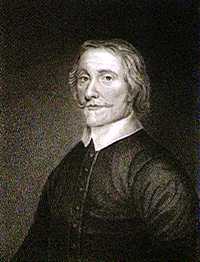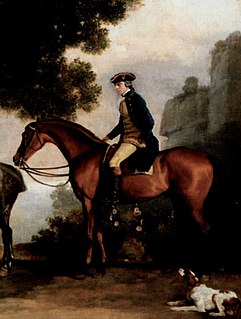
Earl of Egmont was a title in the Peerage of Ireland, created in 1733 for John Perceval, 1st Viscount Perceval. It became extinct with the death of the twelfth earl in 2011.

Earl of Bessborough is a title in the Peerage of Ireland. It was created in 1739 for Brabazon Ponsonby, 2nd Viscount Duncannon, who had previously represented Newtownards and County Kildare in the Irish House of Commons. In 1749, he was given the additional title of Baron Ponsonby of Sysonby, in the County of Leicester, in the Peerage of Great Britain, which entitled him to a seat in the British House of Lords. The titles Viscount Duncannon, of the fort of Duncannon in the County of Wexford, and Baron Bessborough, of Bessborough, Piltown, in the County of Kilkenny, had been created in the Peerage of Ireland in 1723 and 1721 respectively for Lord Bessborough's father William Ponsonby, who had earlier represented County Kilkenny in the Irish House of Commons.

Earl of Verulam is a title in the Peerage of the United Kingdom. It was created in 1815 for James Grimston, 4th Viscount Grimston. He was made Viscount Grimston at the same time. Verulam had previously represented St Albans in the House of Commons. In 1808 he had also succeeded his maternal cousin as tenth Lord Forrester. He was succeeded by his son, the second Earl.

Earl of Strafford is a title that has been created three times in English and British history.

Viscount Valentia is a title in the Peerage of Ireland. It has been created twice. The first creation came in 1621 for Henry Power. A year later, his kinsman Sir Francis Annesley, 1st Baronet, was given a "reversionary grant" of the viscountcy, which stated that on Power's death Annesley would be created Viscount Valentia. Annesley, a member of an influential Anglo-Irish family which descended from Newport Pagnell in the County of Buckinghamshire, was a favourite of James I, who granted him land in Ireland, notably the fort of Mountnorris in County Armagh. He was knighted in 1616, created a baronet, of Newport Pagnell in the County of Buckingham, in the Baronetage of Ireland in 1620 and Baron Mountnorris, of Mountnorris in the County of Armagh, in 1628.

Viscount Gage, of Castle Island in the County of Kerry of the Kingdom of Ireland, is a title in the Peerage of Ireland. It was created in 1720 for Thomas Gage, along with the subsidiary title of Baron Gage, of Castlebar in the County of Mayo, also in the Peerage of Ireland. In 1744 he also succeeded his cousin as eighth Baronet, of Firle Place. The titles remain united. The Gage family descends from John Gage, who was created a baronet, of Firle Place in the County of Sussex, in the Baronetage of England on 26 March 1622. His great-grandson, the seventh Baronet, represented Seaford in Parliament. He was succeeded by his first cousin, Thomas Gage, 1st Viscount Gage, the eighth Baronet. He sat as a Member of Parliament for Minehead and Tewkesbury and also served as Governor of Barbados. In 1720, 24 years before succeeding in the baronetcy, he was raised to the Peerage of Ireland as Baron Gage and Viscount Gage. His second son was the military commander the Hon. Thomas Gage.
Viscount Hawarden is a title in the Peerage of Ireland.

Viscount St Davids, of Lydstep Haven in the County of Pembroke, is a title in the Peerage of the United Kingdom. It was created in 1918 for John Philipps, 1st Baron St Davids. The Philipps family descends from Sir John Philipps, who represented Pembrokeshire in the House of Commons. In 1621 he was created a Baronet, of Picton Castle in the County of Pembroke, in the Baronetage of England. His grandson, the third Baronet, also sat as Member of Parliament for Pembrokeshire. He was succeeded by his son, the fourth Baronet. He represented Pembroke and Haverfordwest in Parliament. His son, the fifth Baronet, sat for Haverfordwest. He was succeeded by his younger brother, the sixth Baronet. He represented Carmarthen, Petersfield and Pembrokeshire in the House of Commons.

Baron Kilmaine is a title that has been created twice, both times in the Peerage of Ireland. The first creation came in 1722 in favour of the soldier the Hon. James O'Hara. Two years later he succeeded his father as Baron Tyrawley. However, both titles became extinct on the second Baron Tyrawley's death in 1773 without legitimate sons.

Baron Farnham, of Farnham in the County of Cavan, is a title in the Peerage of Ireland. It was created in 1756 for John Maxwell, who had previously represented Cavan Borough in the Irish House of Commons. John Maxwell's son, the second Baron, was created Viscount Farnham in 1760 and Earl of Farnham in 1763. Both titles were in the Peerage of Ireland but became extinct when he died childless in 1779. His brother and successor, the third Baron, was again created Viscount Farnham in 1781 and Earl of Farnham in 1785. These titles were also in the Peerage of Ireland. His son, the second Earl, sat in the House of Lords as an Irish Representative Peer from 1816 to 1823. However, he had no children and on his death in 1823 the viscountcy and earldom became extinct.

Viscount Clifden, of Gowran in the County of Kilkenny, Ireland, was a title in the Peerage of Ireland. It was created on 12 January 1781 for James Agar, 1st Baron Clifden. He had already been created Baron Clifden, of Gowran in the County of Kilkenny, in 1776, also in the Peerage of Ireland. The Viscounts also held the titles of Baron Mendip in the Peerage of Great Britain from 1802 to 1974 and Baron Dover from 1836 to 1899, when this title became extinct, and Baron Robartes from 1899 to 1974, when this title became extinct, the two latter titles which were in the Peerage of the United Kingdom. The interrelated histories of the peerages follows below.

Baron Dufferin and Claneboye, of Ballyleidy and Killyleagh in County Down, Northern Ireland, is a title in the Peerage of Ireland. It was created 30 July 1800 for Dame Dorcas Blackwood, widow of Sir John Blackwood, 2nd Baronet, Member of the Irish Parliament for Killyleagh and Bangor, in return for support for the Union of Ireland and the United Kingdom.

Baron Tredegar, of Tredegar in the County of Monmouth, was a title in the Peerage of the United Kingdom. It was created on 16 April 1859 for the Welsh politician Sir Charles Morgan, 3rd Baronet, who had earlier represented Brecon in Parliament. His eldest son, Charles Rodney Morgan, sat as Member of Parliament for Brecon, but predeceased his father. Lord Tredegar was therefore succeeded by his second son, the second Baron.
Nineteen baronetcies have been created for persons with the surname Hamilton, eight in the Baronetage of Nova Scotia, one in the Baronetage of England, five in the Baronetage of Ireland, one in the Baronetage of Great Britain and four in the Baronetage of the United Kingdom. As of 2008 two creations are extant, two are dormant, two are either extinct or dormant and twelve extinct.

Frederick James Lamb, 3rd Viscount Melbourne,, known as The Lord Beauvale from 1839 to 1848, was a British diplomat.

Peniston Lamb, 1st Viscount Melbourne, known as Sir Peniston Lamb, 2nd Baronet, from 1768 to 1770, was a British politician who sat in the House of Commons from 1768 to 1793. He was the father of Prime Minister William Lamb, 2nd Viscount Melbourne.

Sir Matthew Lamb, 1st Baronet was a British barrister and politician. He was the grandfather of Prime Minister William Lamb, 2nd Viscount Melbourne.

Henry Belasyse, 2nd Earl Fauconberg was a British politician and peer.

Earl of Arran is a title in the Peerage of Ireland. It is not to be confused with the title Earl of Arran in the Peerage of Scotland. The two titles refer to different places: the Aran Islands in Ireland, and the Isle of Arran in Scotland. The Irish earldom is held by the Gore family. The Scottish earldom is a separate title, held as a subsidiary title of the Duke of Hamilton.
William Chetwynd, 4th Viscount Chetwynd of Bearhaven was a British Whig politician who sat in the House of Commons from 1747 to 1754.













